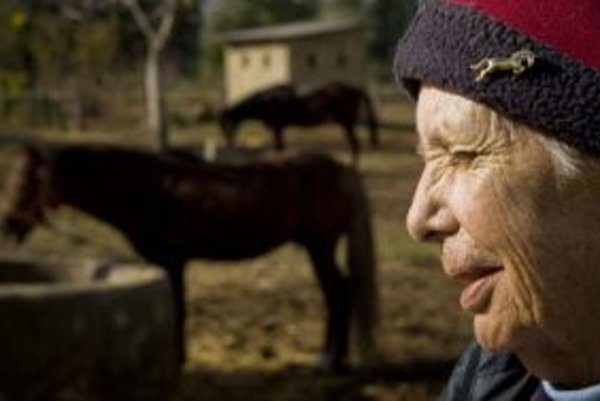This pony, which for want of a better name I describe as the “Caspian pony” is a small, slim, neatly-proportioned animal, showing generally plenty of quality, and, at its best, like a Arab horse in miniature.
Louise Firouz:
He could be the perfect child’s pony, but where does he come from?
Persia’s indigenous breeds of horses are well known, and the widespread Mongolian type of pony is to be found there too. But on the Persian shores of the Caspian and the northern shores of the Elburz Mountains there exists a most interesting type of small pony, which I have never seen
described in books and is practically unknown outside its particular
territory.
This pony, which for want of a better name I describe as the “Caspian pony” is a small, slim, neatly-proportioned animal, showing generally plenty of quality, and, at its best, like a Arab horse in miniature.
His height ranges from 10.2h.h. to 12h.h., Averaging about 11h.h. As the photographs show, he has a decidedly quality-looking head, well set on, and a good forehead, small pointed ears and good eyes. The predominant colour is bay, but chestnuts and grays are also found. He inhabits a very limited area around the towns of Amol, Babol and Shahi between the Caspian Sea and the Elburz Mountains.
Naturally there are no written records or pedigrees, and the local breeding is haphazard and unscientific, but nevertheless the pony as he is today has been known and used in this area for a very long time. When mated with its own kind it always breeds true to type and size, so one may assume that it has long been established as a breed. Its smallness may be attributed to the stunting effects of climate and mineral and other nutritional deficiencies. But it is by no means certain that these factors operate in this case. Certainly there are no excessive extremes of temperature. Moreover larger animals exist and breed in the same area, and do not seem to grow any smaller.
Further investigation has elicited the following facts:
In Amol, the Caspian pony is usually bred to one of its own type, due to the need for small cart horses which can dart in and out of the bazaar with more speed than a donkey.
In Babol, the Caspian pony is often crossed with a Mongolian or Tarpan type to increase the size, this been a desirable factor when traversing the muddy roads in winter.
The speed of the Caspian pony is a recognised factor, as is his ability to carry heavy loads. Basically he is a riding and driving pony, and not a draught animal.
Although the mares and foals fare as well as they can on the scant forage, augmented by straw in winter, they are pastured on rich mountain grass in the Summer. The mares are bred from only once a year, so the foals will have the benefit of at least 18 months of milk from the dam.
The ponies have good feet, firm and small with plenty of heel, a good wall and well defined frog: pastern slim and sloping.
There is no established pattern regarding the existence of chestnuts and ergots. Two of the ponies we have have neither ergot or hind chestnuts:
one mare has hind chestnuts and no ergots and another ergots but no hind chestnuts: and one stallion has no hind chestnuts but ergots.
Last year five of these ponies were bought to Teheran to be used as children’s mounts. Rest and good feeding produced immediate results, and gentle treatment soon overcame their initial suspicions and fears, and they became affectionate and interested companions for children and delightful rides. They are built to carry the weight of a child with the gaits of a horse, and, except at full gallop the speed of a horse, as I have established at our farm in Teheran. They could I fact become the perfect children’s ponies, if steps were taken to preserve the breed, which, I fear, is in serious danger of extinction.
Copyright Louise Firouz, reproduced with permission.
Originally published in Light Horse April 1966

